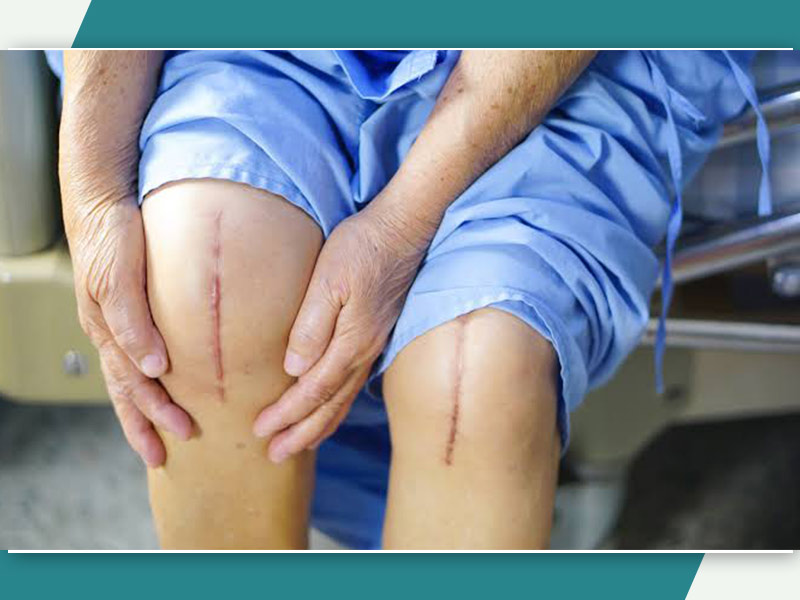
In the past, people with chronic knee pain and knee injuries used to shy away from knee replacement surgery, citing complications. But now, with advancements in the medical field, an increasing number of people are choosing to undergo knee replacement surgery. Knee replacement surgery. or medically known as Arthroplasty, is one of the permanent and safe solutions for chronic knee pain and knee injuries. Arthroplasty means “the surgical repair of the injured or degenerated knee joints.” It is an extensive surgical procedure where degenerated knee caps are reconstructed using prosthetics or artificial body parts.
Table of Content:-
While the surgery can ease the pain and restore the function of the knee, post-surgery care and rehabilitation play an important role for quick recovery and in regaining the full range of motion. The patients who undergo complete knee replacement surgery need to be vigilant and follow the rehabilitation plan given by the doctor in order to avoid any dislocation of the knee or any further complications. Onlymyhealth editorial team talked to Dr. Veerendra Mudnoor, Orthopaedics and joint replacement Surgeon, at Apollo Spectra Hospital Kondapur, Hyderabad, about some tips for rehabilitation after knee replacement surgery.
Post Knee Replacement Rehabilitation Tips and Precautions
According to Dr. Veerendra, here are some easy tips and precautionary steps one can take to during the rehabilitation period.
1. Prevent any form of infections
Any form of bacterial infection, if left untreated, spreads rapidly to the rest of the body. When the bacteria reach the newly replaced prosthetic knee, it swiftly spreads the infection in the joint leading to amputation or another arthroplasty. Usually, the infectious bacteria enters the body through open wounds and cuts. In case of any infections like tooth decay, open scab wounds need to be treated immediately before the infection can reach the knee joint.

2. Exercise and physical activity
Regular exercise and physical activity is often termed as the most important and last phase of the recovery process. It typically starts eight to twelve weeks after the replacement surgery. Physical therapy helps in strengthening leg muscles and the joint. This is the phase where the patients slowly become accustomed to the prosthetic knee and regain the full range of motion of the joint.
Also read: Myths and Facts on Total Knee Replacement Surgery, Explained By Joint Replacement Expert Dr Yadav
3. Use of assistive walking devices
Walking aids like cane or crutches are medically referred to as ambulatory assistive devices. A walking aid is a device a patient is issued to aid the recovery process. These devices help the patients in improving their walking gait, maintaining balance, or safety while walking independently. They also help in shifting weight while moving and also reduces the amount of pressure on the new prosthetic knees.
4. Watching the diet and weight
Knee replacement surgery is an extensive surgery that limits range motion for a couple of weeks before complete recovery. This means minimal physical activity. Hence it is important to maintain a healthy diet and weight as it is easy to put on a few extra kilos due to lack of physical activity. The extra weight gained during this period adds more pressure on the knees during physical activity and slows down the recovery period and makes it extremely painful.

5. Apply Ice and heat alternatively
The swelling around the surgical area will persist for a period of three or six months after surgery. Toto treats the inflammation and relieves to the pain, an ice pack needs to be placed around the inflamed region for ten minutes the first few days post-surgery. After the first few weeks, when the swelling slowly comes down, the patient can start using ice and heat alternatively to relieve the pain and help with the stiffness.
Also read: Virtual Total Knee Replacement: Know The Procedure, Effects, Pros And Cons Of This Surgery
6. Finding a comfortable position while resting
Finding a comfortable position after the surgery to rest or sleep can be hard as prosthetic knees cause some discomfort. It is advised to use a pillow to rest the leg while sleeping and sitting down as it provides extra padding and can reduce the pain.
These tips are very easy to follow and will be very helpful during the recovery period. It is also important to take doctor advice in case of any swelling and prolonged pain in the newly placed prosthetic joint.
Read more articles on Miscellaneous
Also watch this video
How we keep this article up to date:
We work with experts and keep a close eye on the latest in health and wellness. Whenever there is a new research or helpful information, we update our articles with accurate and useful advice.
Current Version